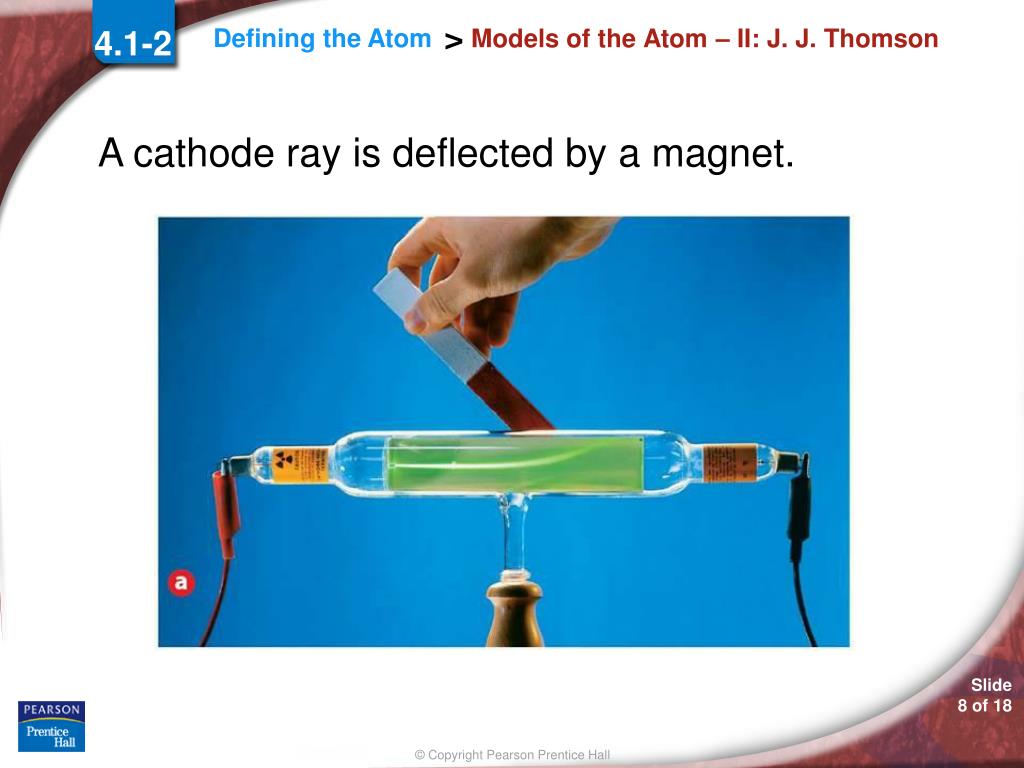

The experiment works fine even without this foil and proceeding further as indicated below.įigure 2. In order to obtain this modified electron flow, the high potential cable mounted on the neck of tube is removed and this potential is connected to a foil of aluminum the aluminum foil is then fixed on the external part of the screen (fig. Electrons hit the phosphorescent screen and a spot of light appear and after that they are recovered in a secondary step.įor the proposed experiment is necessary to modify a little bit the flow of electrons as indicate in fig 2. Cathode emits electrons, which are accelerated by multiple anodes.
#Results of cathode ray experiment Pc#
In a TV or PC monitor tube the electrons flow in the direction indicated in fig. His discovery was the first time a key component of the atom had been identified.If you want to repeat the experiment take the precautions necessary (very high Voltage, use gloves, etc)!!!!!!įor the experiment we have to extract the electron beam which usually is directed toward the fluorescent screen of a cathode tube. Thompson was concluding, in contradiction to some theorists at the time, that the properties of cathode rays were better explained by particles obeying the known laws for electricity and magnetism than by a wave. Note that this happened well before any of the ideas of quantum mechanics and wave/particle duality appeared. Which correspond to what we now call electrons. Later experiments clarified the mass and charge.

And he observed that the particles were always the same regardless of the cathode material or the original gas in the tube. So Thompson observed that cathode rays were best explained by a charged particle (a classical wave would not have been deflected) with an observable charge to mass ratio (which implied either a very large charge or a very small mass). And its speed can be measured by carefully balancing the electric and magnetic fields to give zero net deflection (why this is so involves equations, but this is Chemistry.SE not Math.SE and you can read them in the paper).

The point of the experiments is that the deflection of the particle in a uniform electric field depends on its mass, velocity and charge.
#Results of cathode ray experiment pdf#
The question next arises, What are these particles? Are they atoms, or molecules, or matter in a still finer state of subdivision? To throw some light on this point, I have made a series of measurements of the ratio of the mass of these particles to the charge carried by it (“Cathode rays,” Philosophical magazine, 44 (1897), 293-316, pdf of original available here) Thompson describes the critical experiments like this:Īs the cathode rays carry a charge of negative electricity, they are deflected by an electrostatic force as if they were negatively electrified, and are acted on by a magnetic force in just the way in which this force would act on a negatively electrified body moving along the path of these rays, I can see no escape from the conclusion that they are charges of negative electricity carried by particles of matter. Once he had this apparatus further experiments with electric and magnetic fields could reveal a great deal more about the particles. This enabled Thompson to refute the claim by Hertz that electric fields didn't cause deflection (maybe Hertz's glassblower wasn't as good). The critical experiments done by Thompson relied on having an excellent glassblower who was able to construct an apparatus where electrodes inside the discharge tube which could be charged with an electric field (while retaining a very high vacuum). Hertz, though, claimed electric fields would not deflect them (he was wrong). Later, scientists such as Crookes observed that the rays could be deflected by magnetic fields (though he thought they were just negatively charged gas particles).

Initially the rays were seen to travel in straight lines. So the idea that some sort of ray was emitted by the cathode in the tube was developed. They were first observed as experiments in gas discharge tubes started to exploit better and better vacuums (the early experiments observed the varying forms of discharge in low pressure gases cathode rays only become significant when there is very little gas left in the tubes).Īt very high vacuums, people observed that the glass at the end of the tubes would glow even though the contents of the tubes did not (as there were too few gas particles left to cause a discharge). Thompson was able to measure the ratio of their mass to their speedĬathode "rays" had been known for some time before Thomson.


 0 kommentar(er)
0 kommentar(er)
